Daknam
The Daknam Stadion was home to a pillar of the Belgian D1 for many decades. This club, KSC Lokeren, will disappear
in 2020, after having written some beautiful pages in Belgian football.
Since then, his stadium has housed his descendant, who is far from having the credentials of his illustrious predecessor.

A multi-sport stadium
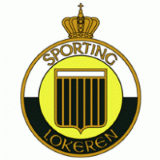 The Daknam Stadion, simply called the Municipal Stadium ("Stedelijk Stadion") in its early years, was inaugurated in 1956.
Allowing the practice of amateur football, athletics and dog racing, nothing predestined it to house a day of European games and a
multitude of Division 1 matches.
The Daknam Stadion, simply called the Municipal Stadium ("Stedelijk Stadion") in its early years, was inaugurated in 1956.
Allowing the practice of amateur football, athletics and dog racing, nothing predestined it to house a day of European games and a
multitude of Division 1 matches.
The site only consisted of a field, athletics track and a 700-seat stand. There was no resident club, the two city clubs,
Racing and Standaard FC playing on their own grounds.
It was not until 1970 and the merger of these two clubs that Daknam became a real football stadium.
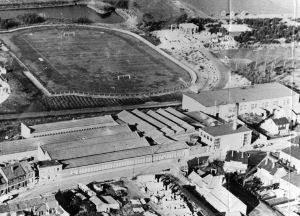
A comet club
So, the small town of Lokeren (around 40,000 inhabitants) became acquainted with football in 1915 with the founding of
FC Racing Club Lokeren. The adventure was cut short since in 1923, the club was already liquidated for a debt of
61.60 Belgian francs (i.e. €1.5, without taking into account inflation). Immediately, a new club was founded in 1923 :
Racing Club Lokeren (registration number 282). A few years later, a competing club was founded in the same town in 1931 :
the Standaard Football Club Lokeren (registration number 1783).
For a long time, these two clubs didn't experience success and apart from two seasons in D2 for Racing (between 1945 and 1947),
the two clubs only played in the lower divisions.
Facing financial difficulties, the two clubs concluded a marriage of convenience in 1970 to form Koninklijke Sporting Club Lokeren
(registration number 282). Its colors will be black, white and yellow, hence the nickname Tricolores.
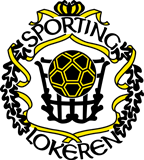 Against all expectations and in the space of 10 years, this new club will go from the status of an obscure provincial club
to a sure bet in Division 1, even making itself noticed on the European scene. Thus, D1 was reached in 1974 and except for
3 seasons between 1993 and 1996, Sporting will only know the elite of Belgian football. On the other hand, the prize list will
remain empty of any trophies for a long time: we will have to wait until 2012 to see the Tricolores win the Belgian Cup. They
will repeat the feat in 2014. Before that, the final of the same Belgian Cup will be reached in 1981, as will the title of
vice-champion of Division 1.
Against all expectations and in the space of 10 years, this new club will go from the status of an obscure provincial club
to a sure bet in Division 1, even making itself noticed on the European scene. Thus, D1 was reached in 1974 and except for
3 seasons between 1993 and 1996, Sporting will only know the elite of Belgian football. On the other hand, the prize list will
remain empty of any trophies for a long time: we will have to wait until 2012 to see the Tricolores win the Belgian Cup. They
will repeat the feat in 2014. Before that, the final of the same Belgian Cup will be reached in 1981, as will the title of
vice-champion of Division 1.
Concerning European competitions, Lokeren will have the luxury of beating FC Barcelona in its small stadium during the 1/16
finals of the UEFA Cup in 1977 (2-1) during its first participation. The Spanish will advance to the next round thanks to their
2-0 victory at Camp Nou.
Also in 1981, Lokeren reached the quarter-finals of the UEFA Cup by being eliminated by the Dutch AZ Alkmaar (2-0 and 0-1).
Daknam will still experience European games during the 1981-1982, 1982-1983, 1987-1988, 2003-2004, 2012-2013 and 2014-2015 seasons.
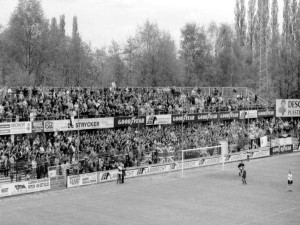
A changing stadium
Obviously, such a sporting evolution implies for the club to be able to benefit from the best possible facilities.
Very quickly, Daknam will be transformed. From 1974, four new stands will be built around the field and the athletics track will be
removed. There are two seated and covered stands laterally, while behind the goals, there are simple terrasses on one side and a
two-tiers stand with standing places on the other. With its new configuration, the stadium can accommodate 18,000 spectators.
In 1980, a new main stand (to the west) was built, but only in the center of the field. On the sides of this stand, there are
either terrasses or changing rooms.
The stadium underwent its first renovations in 1986. In fact, a tornado tore off the roof of the east stand and therefore
had to be rebuilt. Then, the stadium will remain as it is for a good decade.
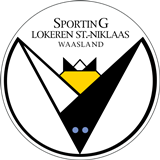 Safety and comfort standards having evolved greatly during the 1990's, work will once again be carried out at Daknam :
the stands on the south side will be closed due to dilapidation, the north stand will have a roof and seats will be installed
at the upper tier, and the main stand will be renovated and extended on one side. The capacity then drops to 9,560 places. New
floodlights towers are also installed.
Safety and comfort standards having evolved greatly during the 1990's, work will once again be carried out at Daknam :
the stands on the south side will be closed due to dilapidation, the north stand will have a roof and seats will be installed
at the upper tier, and the main stand will be renovated and extended on one side. The capacity then drops to 9,560 places. New
floodlights towers are also installed.
Finally, a final renovation will take place in 2008 with the reconstruction of the south stand : these new covered seats will increase the capacity to 12,500 places. Daknam therefore meets the strictest standards of the Belgian FA and UEFA.
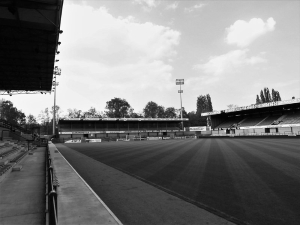
A D1 club every 20km...
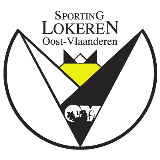 Lokeren is at the heart of a unique situation in Belgium, and perhaps in Europe.
Lokeren is at the heart of a unique situation in Belgium, and perhaps in Europe.
If we follow the route of the E17 highway between the Dutch
and French borders, we find no less than thirteen clubs which sometimes all played in Division 1 at the same time
(Antwerp,
Beerschot, Germinal Ekeren, Berchem Sport,
SK Beveren, SK Sint-Niklaas, Lokeren,
AA Gent, Racing Ghent,
SV Waregem/Zulte-Waregem, Racing Harelbeke, KV Kortrijk
and Excelsior Mouscron, and we
can also include SV Roeselare and Eendracht Aalst located a little behind this famous highway).
Such a concentration of clubs inevitably leads to numerous passionate derbies, where sometimes reason no longer exists. I particularly
remember a derby between Lokeren (then in D2) and Beveren (in D1) : the people of Lokeren boasted to anyone who would listen that
Sporting would knock Beveren out of the Belgian Cup but the result was a cold shower for Lokeren : a scathing 0-7 punctuated the match.
This concentration of clubs also meant fierce competition between all these clubs, most of them from small towns, with a fairly
small fan base. The capacity of these clubs' stadiums also reflects this fact : apart from Antwerp and its
immense Bosuil, the stadiums generally had
between 10,000 and 18,000 places, rarely 20,000. And the same problem is encountered at the level of sponsors, and therefore
financial income. Although being the richest region of the country, the vicinity of the E17 could not allow each club to have
a major sponsor. Thus, often, the main sponsor came from the club's own city. With the explosion in player salaries after
the 1980's, such patrons could no longer continue to continually loosen the purse string and most of these clubs ended up
declining, or even disappearing. Lokeren will of course be part of it.
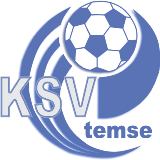 Before disappearing in 2020, the club experienced a new merger, totally unnecessary this time : SK Sint-Niklaas,
a neighboring club having experienced D1 but having neither public nor financial means, will unite its destiny with
Sporting. The new club will have a new logo and a new name : Koninklijke Sporting Lokeren Sint-Niklaas Waasland.
Very soon the name will be changed to Koninklijke Sporting Club Lokeren Oost-Vlaanderen.
Before disappearing in 2020, the club experienced a new merger, totally unnecessary this time : SK Sint-Niklaas,
a neighboring club having experienced D1 but having neither public nor financial means, will unite its destiny with
Sporting. The new club will have a new logo and a new name : Koninklijke Sporting Lokeren Sint-Niklaas Waasland.
Very soon the name will be changed to Koninklijke Sporting Club Lokeren Oost-Vlaanderen.
Unfortunately, with cash flow problems increasing in recent years, the club was forced to enter into liquidation following
a debt of 5 million euros. The registration number 282 disappears.
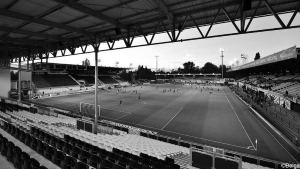
Daknam cannot remain empty
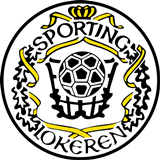 Such a modern and comfortable stadium cannot of course remain free of occupation for long. Also in 2020, the small
club KSV Temse, located not far from Lokeren, moved to Daknam. The name of the club, the coat of arms and the colors
are changed to revive the defunct Sporting. From now on, KSC Lokeren-Temse (registration number 4297) occupies Daknam and plays
in the high divisions of amateur football.
Such a modern and comfortable stadium cannot of course remain free of occupation for long. Also in 2020, the small
club KSV Temse, located not far from Lokeren, moved to Daknam. The name of the club, the coat of arms and the colors
are changed to revive the defunct Sporting. From now on, KSC Lokeren-Temse (registration number 4297) occupies Daknam and plays
in the high divisions of amateur football.
It remains to be seen whether old Daknam will recognize the fervor of Division 1... The stadium began by housing amateur football.
Then, for five decades, Daknam will experience the joys of D1 and the European Cups. Before returning to the amateur level.
Forever ?
Pictures
Daknam
A stadium wedged between a pond, the countryside and a factory. Same situation today.

Daknam
Just before the first major renovations in 1974.

Daknam
The Daknam, in the 80's. Capacity: 18,000 places.

Daknam
The north stand, with its two tiers of standing places, is the fief of the Kop.

Daknam
The damage caused to the east stand by the tornado in 1986.

Daknam
The Daknam in the 90's, shortly before the closure of the south stand.

Daknam
The main stand in 1996. It will be completely renovated four years later.

Daknam
The corner between the north and east stands in 1998.

Daknam
The major works in 2000 with the demolition of the old changing rooms to allow the construction of the extension of the main stand.

Daknam
The extension of the main stand.

Daknam
The Daknam, at the beginning of the 2000's, with colors that didn't correspond to the identity of Sporting.

Daknam
The stand where the Kop had to move after renovations in 2000. The supporters were unhappy.

Daknam
The business seats of the main stand.

Daknam
The exterior appearance of the stadium after the latest renovations.

Daknam
Next to the main stand, a camera tower and new terrasses. Why not extend the main stand there ?

Daknam
The main stand, to the west.

Daknam
The east stand, with terrasses and seating upstairs.

Daknam
The new south stand and its 2,750 seats.

Daknam
The north stand, where the Kop and visitors are now housed.

Daknam
The stadium has finally adopted the Sporting colors.

Daknam
Over time, Daknam has become a beautiful, friendly little stadium.

Daknam
From D1 to amateur football... It's a shame that such a stadium no longer houses a major club.
Note
-
This article comes from my old site www.foothisto.be but was never published.
It has been somewhat modified and updated recently (April 2024).
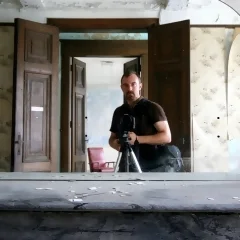
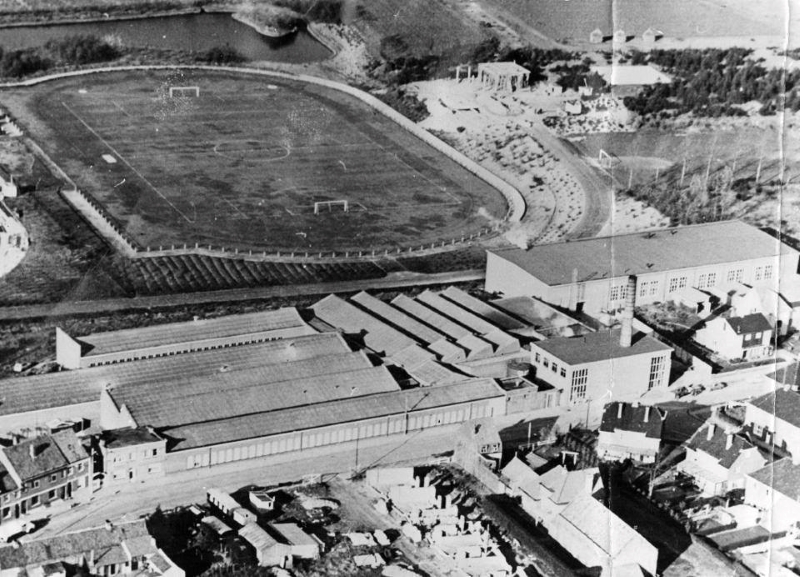
Soyez le premier & devenez quelqu’un de bien • Be the first & become a good person